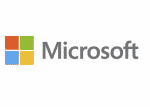The rubric for mitigating Stripe disputes is clear.
But it takes ungodly amounts of labor and industry experience to get the hang of it. And because fraud patterns, industry rules, and business dynamics keep changing, many entrepreneurs struggle to be on the same page with the parties involved in dispute mediation.
In short, dispute mitigation is an uphill battle that leaves you little to zero chances of success. So if you are one of those entrepreneurs lacking tools and frameworks for pattern recognition and trends analysis, it’s easy to throw your hands in the air in bewilderment and write-off payment disputes as a business risk.
The problem is the quantum of revenue that merchants lose to chargebacks keeps going through the roof yearly. But not just that, card networks like Stripe have stringent rules when it comes to chargebacks.
For one, they will move you into the excessive disputes zone if your dispute-to-transaction ratio goes above 0.75%. Excessive dispute activity not only affects your ability to process with Stripe but with other processors as well—and can even result in fines from the card networks.
Having payment disputes is a threat to your company’s survival. Unfortunately, you can’t control whether or not Stripe disputes will come your way. What you can do, however, is to arm yourself with exclusive insights to gain the upper hand when customers file a Stripe dispute. And this article will give you detailed information on the Stripe dispute process.
How do Stripe disputes work?
First of all, a dispute is when a customer files a complaint with their card issuer concerning a particular transaction.
The card issuer could start by making an inquiry or retrieval. And in that sense, they want to get further details on the case from you. After which, they could escalate it to a chargeback, thereby reversing the payment. They will deduct the transaction amount from your merchant account, along with a non-negotiable $15.00 dispute fee (amount might vary depending on your location).
Although each card network has separate rules for mediating disputes, the rubric is the same.
For Stripe disputes, there are standard processes observed.
First, Stripe reviews your evidence and conveys it to its financial partners. If their financial partners ascertain your evidence is sufficient and speaks to the Stripe dispute, they will share your documentation with the card issuer. The card brand will, in turn, evaluate the documentation and reach a decision. Stripe will then communicate that decision to you via the Stripe Dashboard, webhooks, and API.
In essence, Stripe acts as the middle person in the dispute process, while the card issuer has the final say on the Stripe dispute’s outcome.
Important terminologies and steps involved in a Stripe dispute lifecycle you should keep in mind
1. Inquiries and retrievals
As we noted earlier, when a customer files a Stripe dispute, some card brands start by investigating the transaction before proceeding with a chargeback if need be.
They’ll request further information about the charge. American Express refers to that process as “inquiries,” but most card brands refer to them as “retrievals.” MasterCard and Visa rarely make inquiries. They create a chargeback immediately after a customer files a transaction dispute.
Inquiries give you a window to mitigate the dispute before it becomes a full-blown chargeback. And to achieve that, you should submit every relevant documentation on the transaction or refund the payment in full. Refunding the customer means you addressed the inquiry or retrieval. And Stripe will not charge you any dispute fee.
But you fail to address the inquiry or retrieval with compelling evidence. You will most certainly lose the case.
The rule of thumb is to ALWAYS respond to inquiries and retrievals as if they were chargebacks. And put in the work to make the dispute go away at that stage. Sometimes, customers file Stripe disputes when they don’t recognize a charge on their card. So, contact the customer first and figure out the issue to help you provide commensurate documentation that addresses the card issuer’s inquiry.
2. Chargebacks
Suppose the card brand decides that your evidence does not meet their requirement for overturning the Stripe dispute, or they chose not to make an inquiry or retrieval. In that case, they’ll go straight to creating a chargeback.
They will forcefully deduct and hold the transaction amount throughout the Stripe dispute timeline. Ideally, the card network will give you 7-21 days from when they created the chargeback to respond with sufficient evidence.
Chargeback response time-limit can vary depending on the card network, and if you don’t present compelling evidence within that time, you will lose the case by default. But if you send your documentation as required, Stripe will convey the same to the customer’s bank, and the bank has 60-75 days to reach a decision. If you choose not to appeal it, their decision is the final step in the dispute process.
3. Disputed amount
By and large, the disputed amount represents the transaction amount. That is, the dollar value of the disputed transaction. However, Stripe notes that the amount of a dispute often exceeds the original charge amount. This discrepancy, they said, is usually due to currency conversion. And it can also occur when the card’s issuer bundles multiple charges into a single chargeback, which is more common for regular, recurring charges or multiple charges of small amounts—usually less than 50 USD.
But generally, they convert the disputed amount back to the payment’s original currency if the system converted the actual payment into your account’s default currency.
Stripe advised that if you receive a Stripe dispute for more than the original charge amount, you should review all payments made to your business by the same customer or card. And determine whether more than one charge might be included in the disputed amount. If you cannot determine why a dispute is for more than the original charge, you can contact their customer care.
Best practices for mitigating Stripe disputes
How you respond to any dispute determines the outcome of the case.
We’ve noted that Stripe receives a notification of the disputed payment when a dispute occurs and sends you an automated email about it. They will create a Dispute object with the status “needs_response.” If you’ve set up your integration to receive webhooks, Stripe also sends a charge.dispute.created event.
As a best practice, Stripe recommends that users respond within their Dashboard. It guides you through the submission process, step-by-step—automatically formatting the information you provide. To complete that process, they will ask for any necessary files on the purchase.
Below are some vital guidelines that can help you win stripe chargebacks with ease.
Provide compelling evidence and keep it to the point
Customers lodge thousands of disputes daily, and that keeps card issuers busy.
So, avoid unnecessary details, lengthy introductions about your product or company, a complaint about the customer, or the dispute’s unfairness. Instead, hammer down to the issue at hand. Provide facts about the original purchase using a neutral and professional tone.
Do your due diligence; take some time to investigate the dispute while collecting evidence to submit. For example, review Google Maps and Street View to understand your delivery location better or check social media like Facebook or LinkedIn to help establish the customer as a legitimate cardholder.
Exchanges such as email correspondence or texts with the customer do not verify identity. If you must include them, make sure that you submit only the relevant information.
Make your evidence factual, professional, and concise. While providing little evidence is a problem, overwhelming the card issuer with unnecessary information can have the same effect. Remember, card issuers do not follow any links you provide in response. Include a clear screenshot of your terms or policies as they appear during checkout or on your site if they are an essential part of your defense.
Include compelling proof of customer authorization
Fraudulent Stripe disputes make up the majority of all cases. Showing that the actual cardholder knew of and authorized the transaction under dispute is crucial to winning Stripe chargebacks. Any data that shows proof of this is a standard part of an effective response, such as:
- AVS (Address Verification System) matches
- CVC (Card Verification Code) confirmations
- Signed receipts or contracts
- The IP address that matches the cardholder’s verified billing address
Stripe always includes any AVS/CVC results and the purchase IP (if available from your Stripe integration), but if you have any other evidence of authorization, be sure to include it.
Include evidence that you delivered the service or product
Aside from fraudulent disputes, cardholders’ claims that products or services never arrived or happened were defective or unsatisfactory or not as described are potential dispute reason codes. Let’s assume that the product or service was in good standing and shipped and delivered before the dispute date; then, you should provide proof of use or delivery.
If you sold a physical good to the customer, then provide proof of shipment and delivery that includes the full delivery address, not just the city and ZIP code.
And if your client provided a “Ship To” name that differs from their own (e.g., gift purchase), make sure that you have documentation explaining why they differ. While it’s common practice to purchase and ship to an address that doesn’t match the card’s verified billing address, this is an additional dispute risk.
On the other hand, if you sold digital merchandise, provide evidence such as an IP address or system log, proving the customer downloaded the content or used your software or service.
Include a copy of your terms of service and refund policy
When it comes to disputes, fine prints matter. Providing proof that your customer agreed to and understood your terms of service at checkout or did not follow your policies regarding returns or refunds is critical. A clean screenshot of how your terms of service or other policies are presented during checkout is an essential addition to your evidence—it is not enough to include a text copy of these.
When submitting documents or images as evidence, use the following recommendations to make sure they can remain readable:
- Use a 12 point font or larger.
- Use bold text, callouts, or arrows to draw attention to pertinent information.
- Avoid using color highlighting.
When uploading screenshots:
- Crop the screenshot to the area of interest and circle any key components (e.g., delivery confirmation or signature)
- Use the text fields in the dispute evidence form to describe what the image contains and how it supports your response.
Be aware. Card network will consider any illegible text or data you submit with your response as incomplete and not reviewed.
This post was submitted by Chargeflow





























